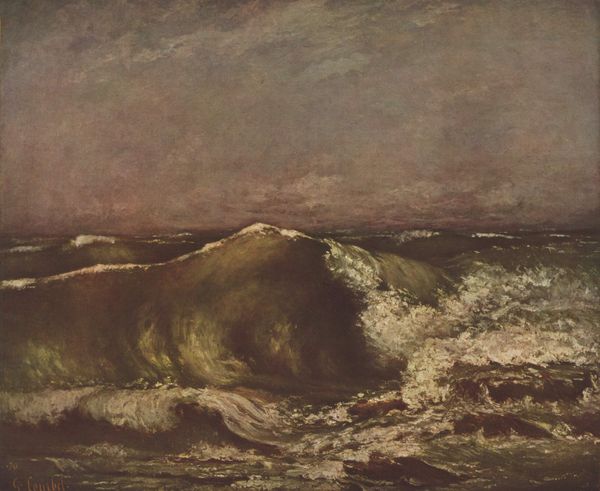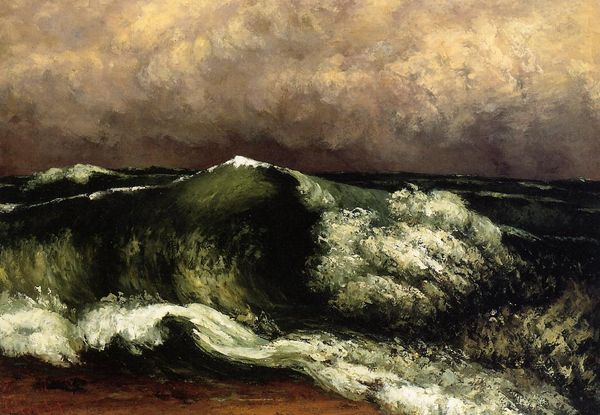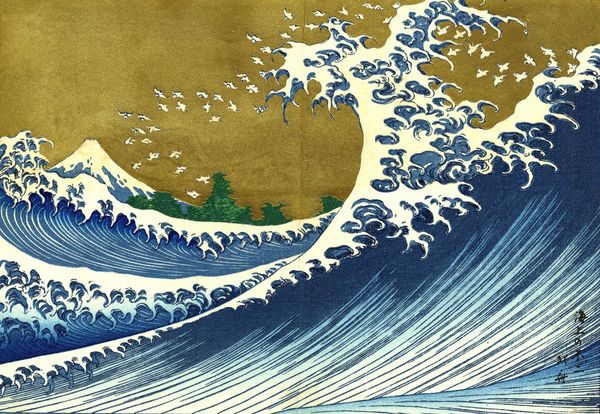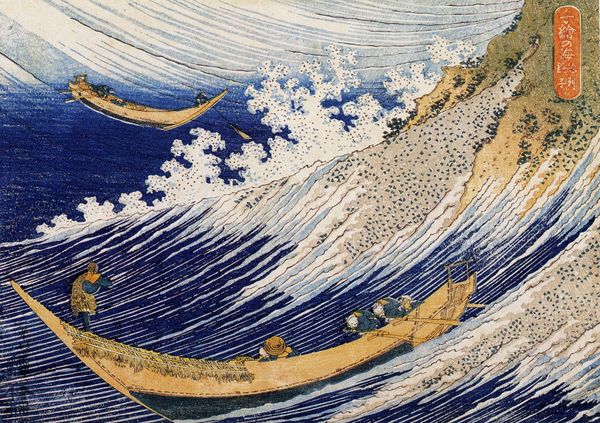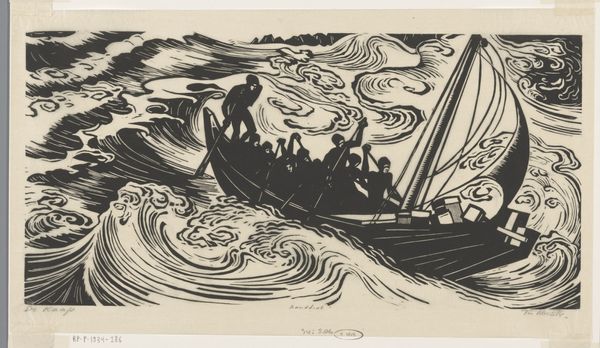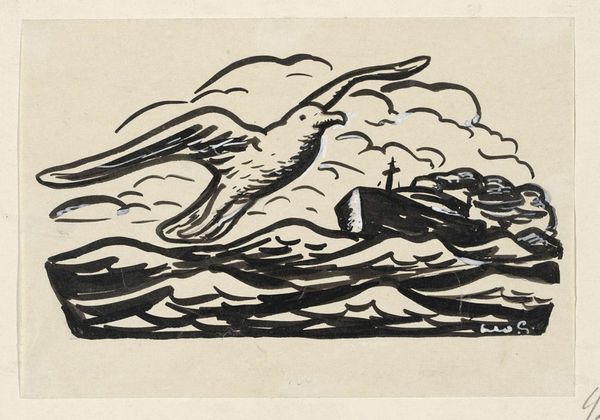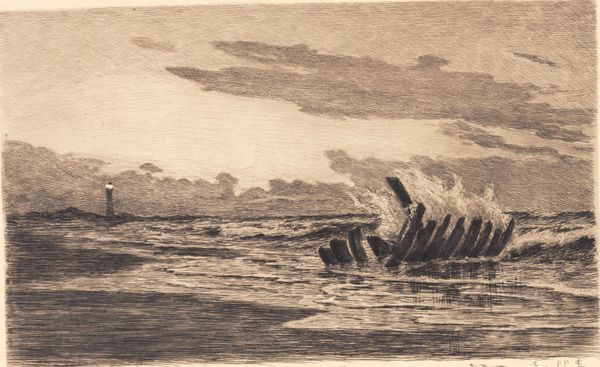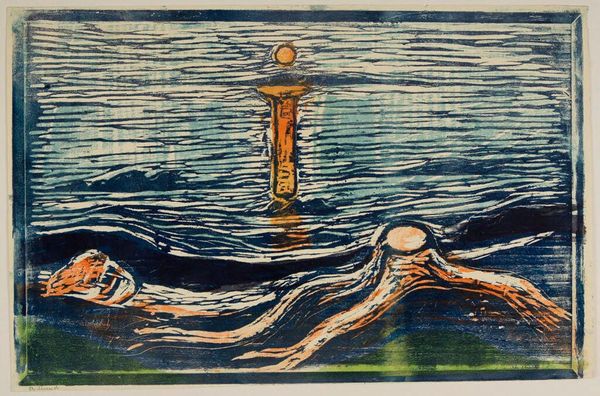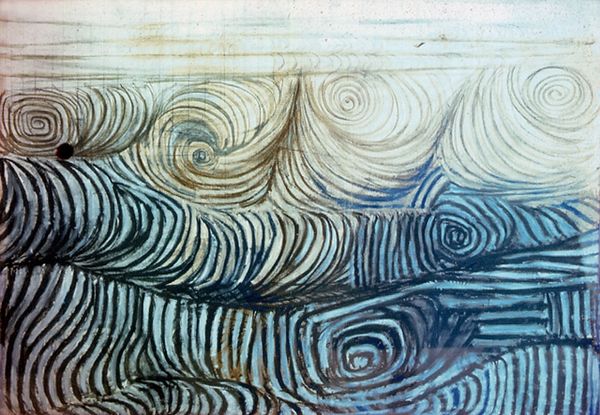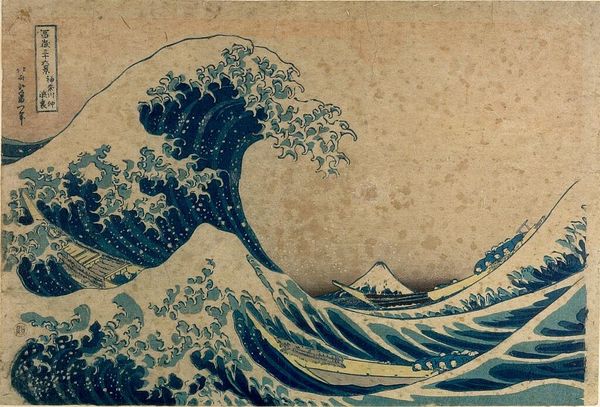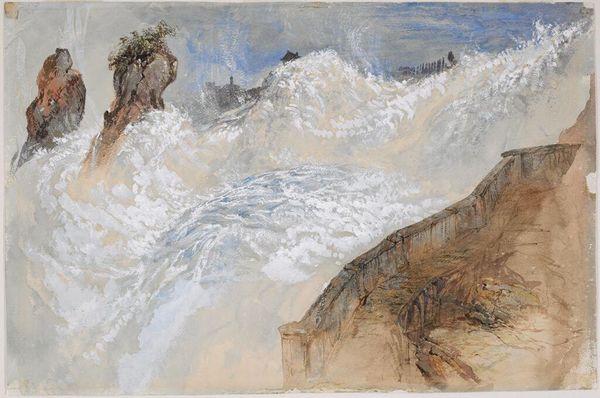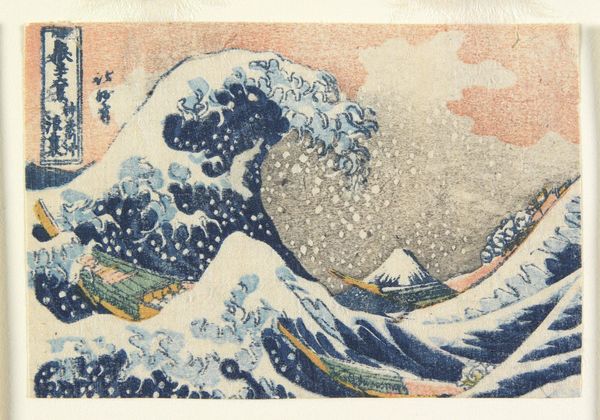
drawing, painting, paper, ink
#
drawing
#
painting
#
landscape
#
paper
#
form
#
oil painting
#
ink
#
geometric
#
orientalism
#
line
Dimensions: 32 x 49 cm
Copyright: Public domain
Curator: This drawing, "The Blue Wave," created by Hélène Guinepied around 1930, catches my eye. It seems to be rendered with ink and possibly some washes of paint on paper. It reminds me of something you might find illustrating a very stylish edition of Moby Dick. Editor: Instantly, I'm struck by its raw energy. There's this undeniable surge of power—the water feels almost alive, pushing against the constraints of the paper itself. It speaks to forces far beyond human control, a humbling and somewhat intimidating scene. Curator: I completely agree; the dynamic lines lend themselves well to portraying energy. Given its orientalist style, I wonder about influences; there’s something reminiscent of Hokusai's "Great Wave." Perhaps Guinepied encountered that image, either directly or filtered through another artist's interpretation? Editor: Absolutely, the formal echoes of Hokusai are definitely there. And situating this piece within the era is crucial—1930, global instability, rising tides of fascism. The ocean here isn't just beautiful; it embodies existential anxieties, the potential for devastating change. What is she saying about women? Curator: Good question! Maybe there is also an element of freedom. The wave becomes not just a destructive force but one that carries with it the promise of escape, an assertion of elemental independence outside the traditional bounds set upon women. Editor: Yes, maybe she presents the feminine divine under another aspect! One has to move beyond the patriarcal and the old testament to be able to see the feminine in its whole essence, the waves that make the earth move, the volcanoes! Curator: Indeed. Ultimately, "The Blue Wave" feels intensely personal, yet universally resonant. It is an invitation for the viewer to be receptive to their innermost emotions, riding whatever turbulent forces churn beneath the surface. Editor: And by merging aesthetic traditions—Japanese woodblock printing with a European sensibility—it suggests a beautiful interconnectedness, the blurring of cultural boundaries. The painting speaks of humanity and offers a silent statement of hope despite adversity.
Comments
No comments
Be the first to comment and join the conversation on the ultimate creative platform.
